Media Releases
-
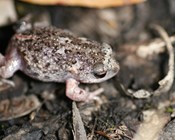
Scientists produce tadpoles better adapted to climate change
Thu, 21 Oct 2021In a world-first laboratory trial reported in Communications Biology, a research team at the University of Western Australia have mixed populations to produce tadpoles that would be more tolerant of climate change.
-

These frogs need our help: Scientists name the Australian frogs at greatest risk of extinction, four likely already lost
Fri, 20 Aug 2021Research published today in Pacific Conservation Biology aims to prevent extinctions of Australian frogs by identifying the 26 species at greatest risk of extinction. Lead author, Charles Darwin University researcher Hayley Geyle, said identifying species at risk is an important step in preventing their extinctions but must be followed by new action.
-
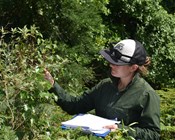
Most of Australia’s threatened plants aren’t being monitored, increasing the risk of extinctions.
Thu, 22 Jul 2021Almost two-thirds of threatened Australian plants are not receiving any monitoring according to a recent national assessment. This puts these species at much greater risk of ongoing declines and extinctions. Without adequate monitoring threatened species could slip to extinction without anyone noticing or having sufficient time to act.
-
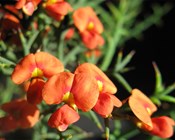
Imperiled Plant Action Plan identifies the 50 plants at greatest risk of extinction and how to save them
Thu, 13 May 2021Threatened plants have declined at an alarming rate in Australia over recent decades pushing many species close to extinction. In response, a team from the Threatened Species Recovery Hub has identified the 50 species at greatest risk of extinction and the steps needed to halt and reverse their declines.
-
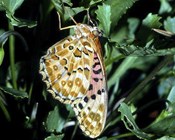
‘Australian Fritillary’ and ‘Pale Imperial Hairstreak’ top list of butterflies at risk of extinction
Tue, 27 Apr 2021New research published in Austral Entomology has identified the top 26 Australian butterfly species and subspecies at greatest risk of extinction within the next 20 years. The team say
-
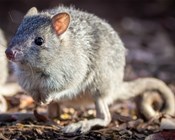
Symposium puts North Queensland’s Threatened Species in the spotlight
Mon, 15 Feb 2021North Queensland is a hotspot for biodiversity in Australia but many species in the region are at risk - with over 500 now listed as threatened.
-

Cats have $12 million impact on agriculture in Australia
Mon, 07 Dec 2020A national study has found that parasites spread by cats cause the loss of over 62,000 unborn lambs each year in Australia among other impacts which cost the Australia sheep industry $12 million per year.
-
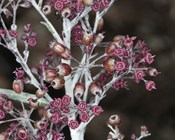
Threatened Plant Index of Australia: 2020 Results
Thu, 03 Dec 2020In just over two decades (1995-2017) numbers of Australian threatened plants have decreased by more than 70% on average. The finding is based on monitoring data for 112 species across almost 600 sites.
-
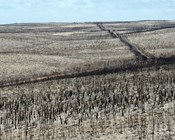
Key scientists to establish KI wildlife recovery plan
Thu, 22 Oct 2020Some of Australia’s leading ecologists will gather with government representatives, conservation groups and landholders on Kangaroo Island to develop a recovery plan for bushfire-affected wildlife and threatened species.
-
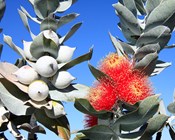
Over 100 eucalypt tree species newly recommended for threatened listing
Thu, 22 Oct 2020A conservation assessment of every Australian eucalypt tree species and found that over 190 species meet internationally recognised criteria for listing as threatened: most of these are not currently listed as threatened.
-
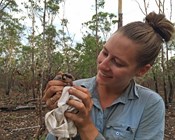
Solutions to northern Australia’s mammal decline crisis
Thu, 22 Oct 2020A major new study has found that protecting and recovering habitat by improving fire management and reducing feral cattle, horses and buffaloes is the best approach to addressing Northern Australia’s mammal decline crisis.
-
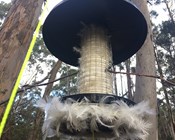
Researchers help endangered birds to ‘self-fumigate’ their nests
Thu, 22 Oct 2020Parasites are taking a heavy toll on the chicks of Tasmania’s endangered forty-spotted pardalote, but with a helping hand from science these tiny birds can ‘fumigate’ their own nests.
-

Cat diseases have $6 billion impact on human health in Australia
Thu, 15 Oct 2020Some cat-dependent diseases can infect humans, with sometimes severe and tragic health consequences. A new study has quantified the human health impacts and costs of cat-dependent diseases in Australia for the first time.
-
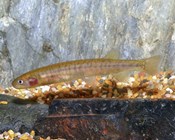
22 Australian freshwater fish at risk of extinction
Tue, 29 Sep 2020Twenty-two native freshwater fish have been identified as likely to become extinct within the next twenty years, unless there is new conservation action, according to new research.
-
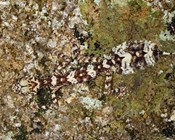
Aussie icons at risk: Scientists name 20 snakes and lizards on path to extinction
Tue, 29 Sep 2020Australia is home to about 10% of the world’s reptile species. Research published today in Pacific Conservation Biology has highlighted that many of these uniquely Australian species are under threat.
-
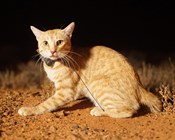
Cat science finalist for Eureka Prize
Mon, 28 Sep 2020Saving Australian wildlife from an invasive introduced predator was the motivation behind a research program which was named as a finalist for a Eureka Prize today.
-

Each roaming pet cat kills 110 native animals per year on average
Fri, 15 May 2020New research has quantified the impact of Australia’s pet cat population on wildlife at a national scale for the first time. The study found that collectively pet cats kill 390 million animals per year across Australia.
-
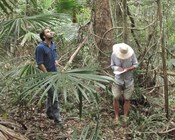
Native guava first Australian casualty of global plant disease
Wed, 13 May 2020The native guava is one of the first Australian plants to be pushed to the brink of extinction by a fungal plant disease which has spread rapidly across the globe, according to a new study.
-
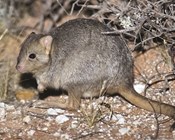
Major declines in threatened mammal populations over last 20 years, but news not all bad
Wed, 22 Apr 2020Populations of Australia’s threatened mammals have declined by over one third (38%) in twenty years (1995-2016), according to new research, but the news isn’t all bad because among the losses there have been some significant recoveries.
-
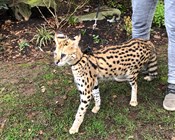
Banning savannah cats in Australia was good science
Tue, 22 Oct 2019In 2008, the Australian Government banned the importation of savannah cats to Australia, and that was a very good thing, according to a new scientific study by the Threatened Species Recovery Hub.
-
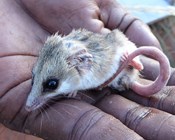
Indigenous action vital for Australia’s threatened species
Wed, 04 Sep 2019It is Threatened Species Day on 7 September. If you are a threatened species in Australia, chances are you are on Indigenous-managed land, as it is the last stronghold for many species which have been lost from the wider landscape .
-

Native birds in South-eastern Australia worst affected by habitat loss
Tue, 03 Sep 2019New research has found that habitat loss is a major concern for hundreds of Australian bird species, and south-eastern Australia has been the worst affected.
-
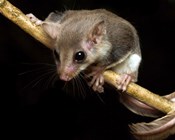
Got a possum in your backyard? We’d love to know
Wed, 17 Jul 2019Researchers are calling on citizen scientists to help them learn more about Australia’s possums and gliders by recording sightings in a new, free app. The community can do a lot to help support conservation in urban areas.
-
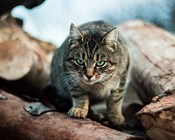
Our cute killers: Cats kill more than 1.5 billion native animals per year in Australia
Tue, 09 Jul 2019Pet and feral cats together kill over two billion reptiles, birds and mammals per year in Australia, and most of these animals are natives, according to a new book written by three of Australia’s leading environmental scientists.
-
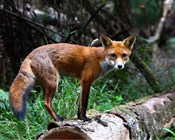
New research a game changer for fox control
Tue, 02 Apr 2019Red foxes are one of the greatest threats to Australia’s native mammals and pose a major risk to livestock. To combat this, Australia spends more than $16 million per year on red fox control, with much of that money directed to poison baiting.
-
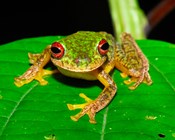
Mass amphibian extinctions globally caused by fungal disease
Mon, 01 Apr 2019An international study led by The Australian National University has found a fungal disease has caused dramatic population declines in more than 500 amphibian species, including 90 extinctions, over the past 50 years.
-
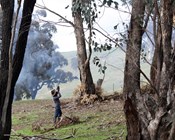
Culling noisy miners fails in NSW trial, study
Mon, 04 Mar 2019The noisy miner is a threat to many other bird species, but culling them is no solution, according to new research by the Threatened Species Recovery Hub of the National Environmental Science Program.
-
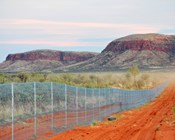
Thirteen mammal extinctions prevented by havens, study
Mon, 04 Mar 2019‘Havens’ free of feral cats and foxes have already prevented 13 mammal extinctions in Australia, and supported improved conservation for many other species. Havens are cat and fox free islands and fenced areas.
-
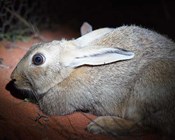
Australia’s 10 worst invasive species, study
Mon, 18 Feb 2019New research by the Threatened Species Recovery Hub has shown that invasive or pest species are a problem for 1,257 threatened species in Australia, or about four out of five species.
-
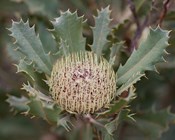
New Research: The Aussie plants facing extinction
Wed, 30 Jan 2019New research by the Threatened Species Recovery Hub has identified the top 100 Australian plant species at risk of extinction. Dr Jennifer Silcock from the University of Queensland said three quarters of Australia’s threatened species are plants.
-
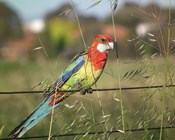
Small and isolated habitat patches crucial to species survival
Mon, 10 Dec 2018Your small local patch of bushland could be playing a much bigger role in conserving biodiversity than you think. A global study just published in PNAS looked at the conservation values of vegetation patches in 27 countries on four continents including Australia, and considered their size and distance to other habitat.
-
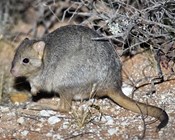
Our mammals at greatest risk from cats and foxes
Tue, 20 Nov 2018New research led by the Threatened Species Recovery Hub has revealed which mammals are most vulnerable to cats and foxes, and many much-loved potoroos, bandicoots and bettongs, as well as native rodents, are at the top of the list.
-

A breakthrough for Australia’s fish
Mon, 03 Sep 2018A research team from the Threatened Species Recovery Hub has made a breakthrough that could help dwindling numbers of Australian freshwater fish species. Dr Jabin Watson from the University of Queensland says the innovation will allow small and young fish to get past barriers like culverts.
-
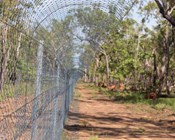
Feral Cat Exclosures Boost Reptile Populations
Tue, 21 Aug 2018A collaborative research project between the Northern Territory Government and Parks Australia has found that feral cat exclosures have a positive impact on local reptile populations.
-

We need to know – the critical role of monitoring in Australia’s fight against extinctions
Thu, 03 May 2018Given the vital importance of monitoring in the fight against extinctions, the Threatened Species Recovery Hub has released a national assessment of Australia's monitoring. The assessment has found that overall, over a third of Australia's threatened animals received no monitoring at all, and where monitoring does exist, it is often inadequate, putting many species at risk.